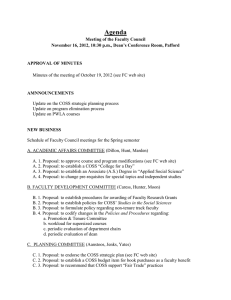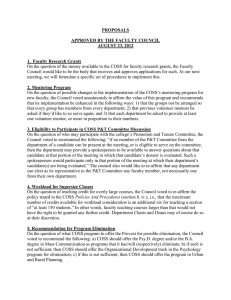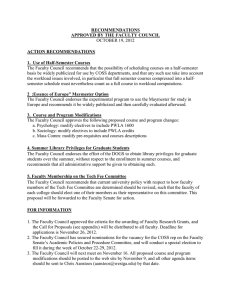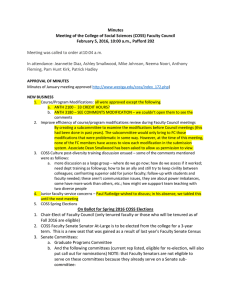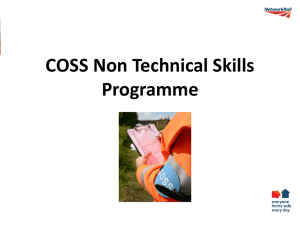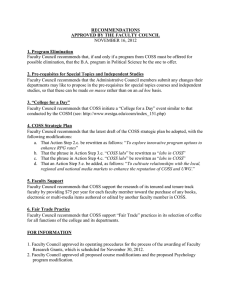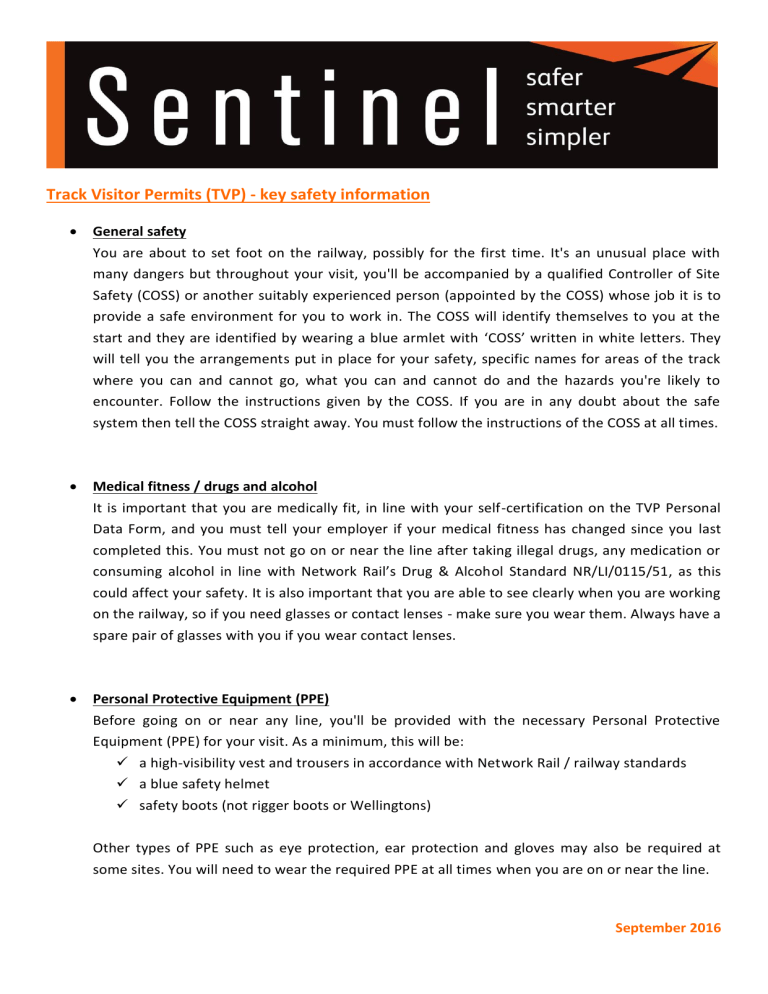
Track Visitor Permits (TVP) - key safety information General safety You are about to set foot on the railway, possibly for the first time. It's an unusual place with many dangers but throughout your visit, you'll be accompanied by a qualified Controller of Site Safety (COSS) or another suitably experienced person (appointed by the COSS) whose job it is to provide a safe environment for you to work in. The COSS will identify themselves to you at the start and they are identified by wearing a blue armlet with ‘COSS’ written in white letters. They will tell you the arrangements put in place for your safety, specific names for areas of the track where you can and cannot go, what you can and cannot do and the hazards you're likely to encounter. Follow the instructions given by the COSS. If you are in any doubt about the safe system then tell the COSS straight away. You must follow the instructions of the COSS at all times. Medical fitness / drugs and alcohol It is important that you are medically fit, in line with your self-certification on the TVP Personal Data Form, and you must tell your employer if your medical fitness has changed since you last completed this. You must not go on or near the line after taking illegal drugs, any medication or consuming alcohol in line with Network Rail’s Drug & Alcohol Standard NR/LI/0115/51, as this could affect your safety. It is also important that you are able to see clearly when you are working on the railway, so if you need glasses or contact lenses - make sure you wear them. Always have a spare pair of glasses with you if you wear contact lenses. Personal Protective Equipment (PPE) Before going on or near any line, you'll be provided with the necessary Personal Protective Equipment (PPE) for your visit. As a minimum, this will be: a high-visibility vest and trousers in accordance with Network Rail / railway standards a blue safety helmet safety boots (not rigger boots or Wellingtons) Other types of PPE such as eye protection, ear protection and gloves may also be required at some sites. You will need to wear the required PPE at all times when you are on or near the line. September 2016 Work that can be undertaken by a TVP holder: Walking in a Group This may be undertaken in either a Green Zone or a Red Zone. If walking is in a Red Zone, the COSS shall make arrangements such that sufficient experienced staff are available to enable close supervision of all TVP holders whilst they are on or near the line. Specialist or Minor work in Green Zones (working separated or with a Line Blockage) Specialist or minor work shall only be undertaken in a Green Zone. Where this is a Separated Green Zone, the COSS shall make sure that sufficient Site Wardens are appointed to enable continuous close supervision of all TVP holders whilst they are on or near the line. Minor work in Red Zones (working on an Open Line) This consists of engineering, technical or operational duties that include site inspections, walking, examining the infrastructure and undertaking surveys. Track layout and terminology A number of terms are used to describe the different parts of the railway – it’s important that you get familiar with them before your track visit. Below is a description of what each term means, but be aware that these are just terms and not actual measurements. The Cess The Four Foot The Six Foot The Ten Foot The space alongside the railway line(s) The space between the running rails of one line The space between a pair of lines The space between one pair of lines and another September 2016 Approaching trains Be aware of approaching trains or machines, they can approach without being heard. Stay alert. If the driver of an approaching train or machine sounds the horn, raise your arm to prove you've heard it and move clear to a position of safety. The COSS will tell you during their safety briefing where to go to reach a position of safety. If a train approaches and for some reason you can't get to position of safety, lie face down but not in the four foot. Gather all loose clothing under you. Positions of safety A position of safety is a place where it is safe to stand when a train is passing. You are in a position of safety if you are at least 2 metres (6 feet 6 inches) from the nearest line on which a train may approach. If the speed limit of the line is no more than 100mph, the distance is reduced to 1.25 metres (4 feet). Speed of Line 0-100 mph +101 mph Minimum Distance for Position of Safety 1.25 metres (4 feet) 2 metres (6 feet 6 inches) The ‘Safe System of Work’ There are two options for the safe system that you will be required to work within - a green zone and a red zone. Green zones (working separated or with a Line Blockage) In a green zone, the line(s) are blocked and generally there are no trains running, except possibly engineering trains or on-track plant. The COSS will tell you the type and limits of the green zone. Sometimes a fence is erected to keep you in the green zone, at other times a Site Warden is appointed to make sure that you stay within the limits of the green zone and well away from the nearest open line. The Site Warden is appointed by the COSS and they are identified by wearing a white armlet with ‘Site Warden’ written in blue letters. They will shout a warning if you stray too close to an open line. If they do shout a warning you must step back into the safe area and acknowledge their warning. Never talk to a Site Warden in case you distract them from doing their job properly. September 2016 Red zones (working on an Open Line) In a red zone the line(s) are open to trains and you will be warned that a train is approaching. The COSS will make sure enough prior warning is given for you to reach a position of safety at least 10 seconds before a train passes. Do not leave the position of safety unless the COSS tells you to. There are five methods of warning, listed below in order of preference: Type of Warning System Automatic Track Warning System (ATWS) Train Operated Warning System (TOWS) Lookout Operated Warning System (LOWS) Portable Warning Equipment (Pee Wee) Method of Warning Trackside flashing lights and sirens Trackside sirens Trackside flashing lights and sirens Trackside siren 5 Unassisted Lookouts Single blast on the horn, whistle or touch in noisy areas. Note: Failure to acknowledge an initial from Lookouts will result in a series of short sharp blasts on the whistle or horn until you do acknowledge. Electrified lines Some lines are electrified, either using overhead cables or rails running alongside the track. The COSS will tell you whether the electricity has been switched off or not. If the overhead line equipment is live, coming into contact with this equipment could kill you as the voltage is a hundred times greater than your supply at home. Don't go within 2.75 metres (9 feet) of the overhead line equipment. Note: TVPs cannot be used for minor work on or near live 3rd / 4th Rail DC electrified lines. Remember the basics Don't go on or near a railway line unless you are clear about the dangers and safe system of work at your location. Always remember these five basic rules: Stay with the COSS at all times. Do what the COSS tells you. Wear the required PPE. Keep alert. 1 2 3 4 Safety is your responsibility as well. Have you understood this safety guidance? If not, please ask your COSS for clarification. September 2016
